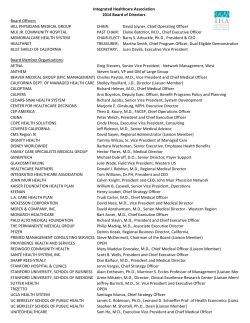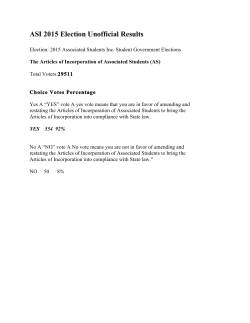
Complex Budgeting for the Pre-Award
BROWN Office of the Vice President for Research NCURA Region 1, 2015 Budgets Beyond the Basics Complex Budgeting for the Pre-Award Administrator Michael A. Kostyshak Brown University Learning Objectives: Focus on 4 main areas that require special attention: • • • • Time periods Appointments & Effort Indirect Cost Cost Sharing BROWN Office of the Vice President for Research 2 Fun With Math!!!! Working with Percentages • 5% = .05 but it does NOT = .05% • Factor of 100 difference! • .05% = .0005 • .05% raise on $50,000 • = $25.00 BROWN Office of the Vice President for Research 3 Fun With Math!!!! Working with Percentages • To increase a number by 5% multiply the number (the Base) by .05 and add them together: 100,000 X .05=5,000 100,000+5,000=105,000 -OR• Simply multiply the Base number by 1.05 100,000 X 1.05 = 105,000 BROWN Office of the Vice President for Research 4 Fun With Math!!!! Working with Percentages • To find the Base from the Total and the % • DO NOT apply the % to the total and subtract!!! • Divide the Total by 1 + % • Total = 105,000 and rate is 5% • $105,000 / 1.05 = $100,000 • Helpful if there is a total funding limit: TC=$300,000 F&A Rate is 62%: 300,000 / 1.62 = $185,185 (TDC with no deductions) BROWN Office of the Vice President for Research 5 Time Periods Time Periods • Fiscal year vs. Period of Performance • Indirect Cost Rates, Benefit Rates, Salary increases, etc. change with the Fiscal Year • Generally average the costs over the period of performance • Apply the correct rate for the relevant time period BROWN Office of the Vice President for Research 6 Time Periods - example Budget Period = April 1 – March 31 Fiscal year = July 1 – June 30 • 3 months in one fiscal year – April, May, June • 9 months in the next fiscal year. – July through the following March • NOTE the Summer and AY months are split over 2 fiscal years = 4 time periods per year BROWN Office of the Vice President for Research 7 Appointments & Effort Faculty Salary & Effort • Salary Depends on the Appointment – 9, 10, 12 months – Annual increase may be by fiscal year or anniversary date of appointment • Effort is Expressed 2 ways – “Person Months” – “Percent of Effort” BROWN Office of the Vice President for Research 8 Appointments & Effort • “Person Months” – The number of months of the relevant budget year committed to the project – For purposes of calculating the value of one month, Calendar, Academic, Summer, doesn’t matter… – Divide the total salary by the appointment to get the monthly salary: BROWN Office of the Vice President for Research 9 Person Months-Example Person Months: • $90,000/ 9 months = $10,000 per month • Multiply by the number of months in the budget to get the salary requested • ½ of a month = $5,000 BROWN Office of the Vice President for Research 10 Person Months Converting Person Months to Calendar Year Effort: • Divide the person months by 12 X 100 to get the effort in calendar year % • Effort =. 5 Person Month, .5 / 12 = .0416 X 100 = 4.16% of 12 months BROWN Office of the Vice President for Research 11 Appointments & Effort Percent of Effort The portion of the relevant time period committed to the project. 9 month appointment: 33.3% Summer = 1 Month 11% Academic Year = 1 Month 8.3% Calendar Year = 1 Month 10 month appointment: 50% Summer = 10% Academic Year = 8.3% Calendar Year = BROWN Office of the Vice President for Research 1 Month 1 Month 1 Month 12 Percent of Effort - example PI working 5% AY and 25% of the Summer: • 9 month appointment at $90,000 • 5% AY effort = $90,000 * .05 = $4,500 • 25% Summer effort = • 90,000/9 = monthly salary of $10,000 • 3 summer months * 10,000 = $30,000 total summer salary • .25 * 30,000 = $7,500 • $4,500 + $7,500 = $12,000 10% of total annual salary • Calendar Effort: 5% of 9 + 25% of 3 = 1.2 months = 10% BROWN Office of the Vice President for Research 13 Appointments and Effort Converting Percent of Effort to Calendar Year Multiply the effort by the appointment to get person months. 5% of 10 months =. 5 month • .5 / 12 = .0416 X 100 = 4.16% of 12 months BROWN Office of the Vice President for Research 14 Indirect Cost • Function of Direct Cost • Certain Costs are exempt: – Equipment (>$5,000 AND > 1 year of use) – Tuition, Health Fee for Grad Student RA – Participant support costs – Subcontract amounts >$25,000 per sub • Sub Total Cost is a Direct Cost to Prime Recipient BROWN Office of the Vice President for Research 15 Indirect Cost - example Year 1 Start Date = April 1; F&A increase on July 1: Total Direct Cost $125,000 – Deduct Tuition & Health Fee ($12,000) – Deduct Equipment ($60,000) MTDC = 53,000 3 months at 62% = $8,215 9 months at 62.5% = $24,844 Total Indirect Cost = $33,059 Total Cost = TDC + IC = $158,059 BROWN Office of the Vice President for Research 16 Fun With Math!!!! • To find TDC from Total Cost WITH deductions: TC=$300,000; F&A 62%; Equip. $25,000; Tuition= $15,000: TDC = “D” MTDC = “D” – 40,000 I=.62*MTDC Basic Equation: D + I = 300,000 Rewrite Basic Eq. in terms of D: D + .62(D – 40,000) = 300,000 Get rid of parenthesis: D + .62D – 24,800 = 300,000 Combine like terms: 1.62D = 324,800 Divide each side by 1.62 to isolate “D” D = 200,494 200,494 + .62(160,494) = 300,000 BROWN Office of the Vice President for Research 17 Subawards • Understanding Subawards and Indirect Cost • Subrecipient Total Cost is a Direct Cost to the PTE • PTE charges IC on the first $25,000 of Subaward Total Cost for the life of the subaward • This may include sub’s indirect cost BROWN Office of the Vice President for Research 18 Subawards IC calculation in Prime Budget: Year 1 Year 2 PTE TDC: 100,000 100,000 Incl. Sub Total Cost: 15,000 PTE MTDC 100,000 PTE Indirect (62.5%) 62,500 PTE Total Cost: $162,500 BROWN Office of the Vice President for Research 15,000 95,000 59,375 $159,375 19 Subawards NIH Modular Budgets • Direct costs requested in $25,000 “Modules” • Modules do not include Subaward Indirect Cost. • TDC = Module amount plus Subaward Indirect Cost • MTDC is calculated the usual way using the module amount plus Subaward Indirect Cost BROWN Office of the Vice President for Research 20 NIH Modular Budgets Total Direct Cost = Deduct Subcontract F&A Basis for calculating the modules: Module amount Add Subcontract F&A PTE Total Direct Cost $128,081 (5,000) 123,081 Calculate F&A@ 62%: equip = 60,000 tuition = 15,000 MTDC = 55,000 Apply the Rate = 55,000 * .62 F&A = Total Cost = BROWN Office of the Vice President for Research 125,000 5,000 $130,000 34,100 $164,100 21 Cost Sharing Cost Sharing on Sponsored Projects BROWN Office of the Vice President for Research 22 Cost Sharing • Cost Sharing is like DARK MATTER: 1. 2. 3. 4. Real Hard to see We know it is there, can observe its effects MUST ACCOUNT FOR IT BROWN Office of the Vice President for Research 23 Cost Sharing • Definition: – A portion of total sponsored project/program costs not funded by the sponsor – All contributions, including cash and in-kind, that a recipient makes to an award 24 Definitions – Mandatory Cost Sharing: • • • • • Required by the Sponsor Identified or quantified in the proposal A commitment of the University A condition of receiving the award Must be captured and documented – Voluntary Cost Sharing : • Not required by the Sponsor • May be Committed or Uncommitted BROWN Office of the Vice President for Research 25 Definitions – Voluntary Committed Cost Sharing: • Identified or quantified in the proposal • Commitment of the University • Must be captured and documented – Voluntary Uncommitted Cost Sharing: • • • • BROWN Not identified in the proposal, or other communication Not a condition of the award Not a binding commitment of the University Does Not require documenting or reporting Office of the Vice President for Research 26 Cost Sharing - Types • Cash, In-Kind, Reduced F&A • Cash – Payment for the direct costs of a project • In-Kind A non-cash contribution to a sponsored project or program Provided by a third party Based on Fair Market Value Any form of Allowable: goods, services, real property, equipment, supplies or other expendable property – Directly benefiting a specifically designated project only – – – – BROWN Office of the Vice President for Research 27 Cost Sharing - Types • Reduced F&A - Unrecovered Indirect Cost – Unrecovered indirect cost attributed to the direct costs being covered by the Recipient. – F&A cost rate less than the rate allowed by the sponsor BROWN Office of the Vice President for Research 28 Cost Sharing - Impact • Financial impact – Reduces total institutional dollars available for research endeavors – Inability to recover F&A costs associated with cost sharing dollars • Administrative/Compliance impact – Associated administrative requirements – Failure to properly document cost sharing may result in audit findings • Facilities and Administration Rate impact – May reduce University’s future indirect cost rate BROWN Office of the Vice President for Research 29 Fun With Math!!!! F&A Costs / Direct Cost BASE = F&A Rate $62,500 / $100,000 = 62.5% $62,500 / $101,000 = 61.88% An increase in the BASE will reduce the rate BROWN Office of the Vice President for Research 30 Cost Sharing - Effect on the Rate • Are some costs/sources better than others? • Graduate student support – graduate students are partially excluded from MTDC (tuition, health fee); • Equipment & Participant support – excluded from MTDC for research base • Cost Sharing from gift funds intended for research – Destined for the research base anyway… BROWN Office of the Vice President for Research 31 What is NOT Cost Sharing • Costs that occur before or after the period of performance of the project • Preliminary work done with department funds, start-up funds, or gifts, etc. prior to the proposed work • Work covered by other grants that have their own unique Scope of Work • Cost that are not allowable under the award BROWN Office of the Vice President for Research 32 Cost Sharing Pitfalls • Most sponsored projects require faculty effort • Beware of expressions of support that are not included in the budget figures – Budget narratives, work scope, facilities statements, letters of support – Referencing the use of start up funds… • Revised budgets due to a sponsor cut in funding should include a corresponding cut in cost-sharing commitment • Remember that most direct cost sharing has a respective F&A component BROWN Office of the Vice President for Research 33
© Copyright 2025










